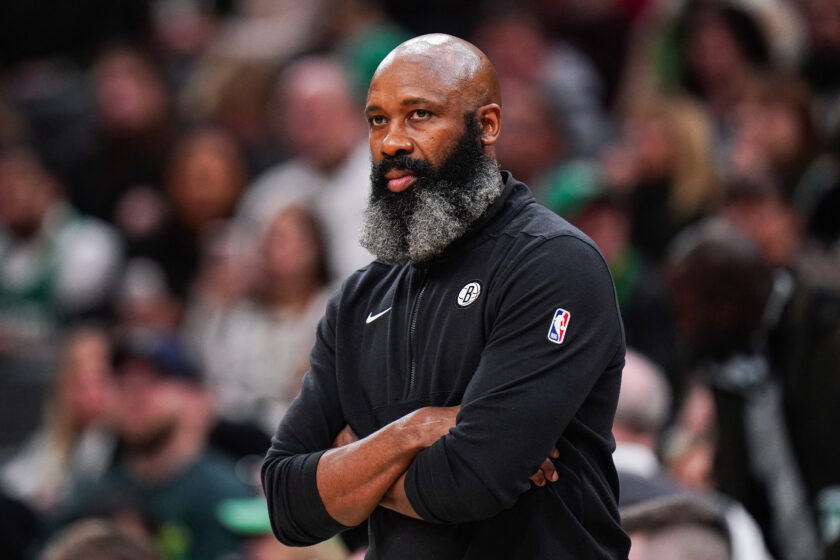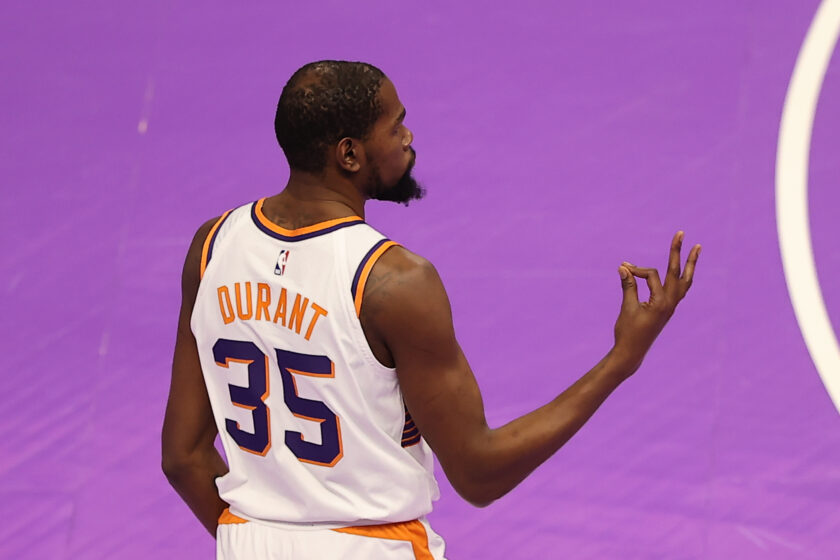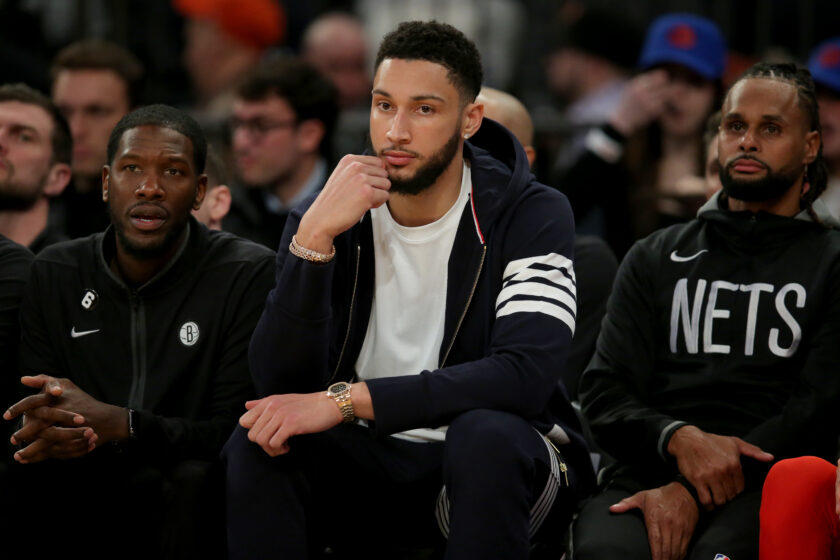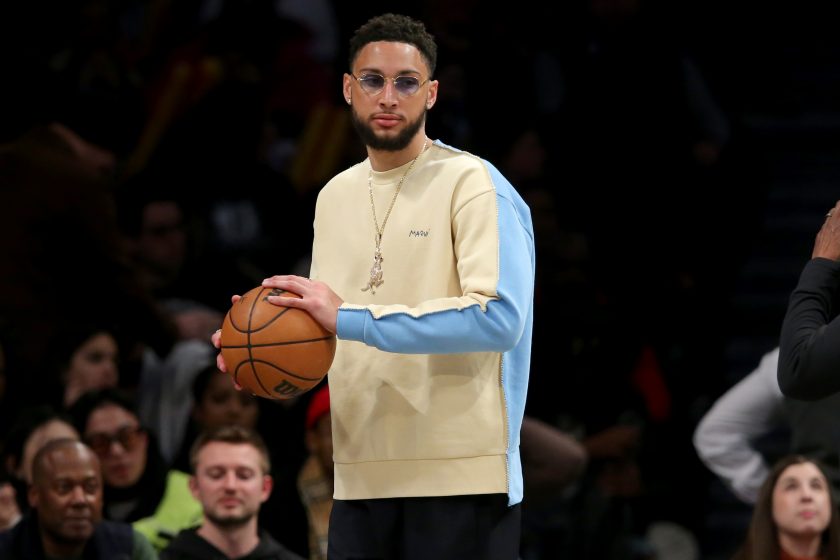Brooklyn Nets assassin Joe Harris: Potential NBA All-Star?
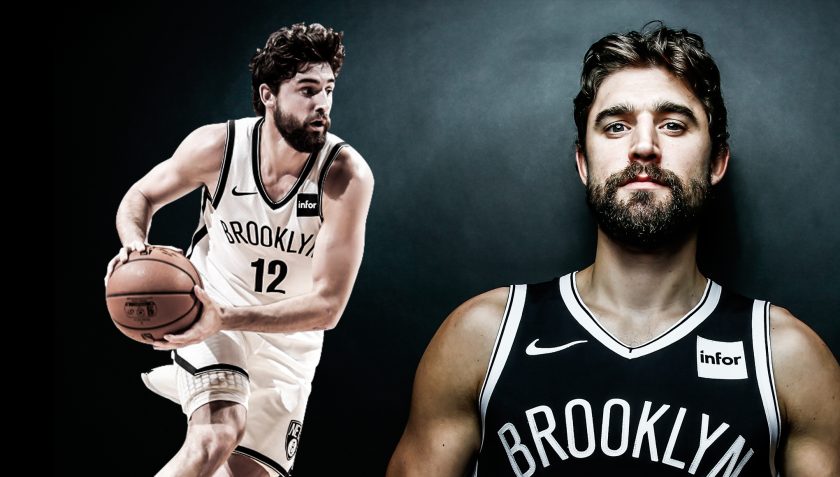
Joe Harris is already a tremendous talent in his own right. But is there another level for the Brooklyn Nets’ sharpshooter?
[sc name=”Matt Brooks Banner”]Joe Harris is the model of consistency. After putting up a career-high 13.7 points on 50% from the field and a league-best 47.4% from deep, Joey Buckets is building upon 2018-2019 with one of Team USA’s best FIBA World Cup performances.
Thus far, Joe Harris is averaging 10 points, 4.7 rebounds, 61.1% from the field, and 66.7% from three. In every sense of the word, Joe Harris has become the ideal role player. Plus, at just 27 years old, you could make the case that the five-year pro is just getting started.
With all that said, it’s worth asking: is there another level for Joe Harris?
Now to be truthful, the inspiration for this article came from the world’s holiest, most family-friendly website: Twitter. Writing an article based upon my own tweet is a new level of vanity for me; it’s akin to waking up every morning, pacing up to my mirror, and having a passionate makeout session with my own reflection. It’s that bad. Anywho, the tweet:
My hottest of hot takes is that I think there's a world in which Joe Harris could make an All-Star team.
…Keep in mind, it would need to be a 14-15 Hawks scenario where the team is 60 wins and runs through the conference mercilessly.
— Matt Brooks (@MattBrooksNBA) September 3, 2019
OH YEAH! “Matty Hot Takes” is in the building! Did your phone/computer screen combust after reading that? Because it should have.
A million and one things would have to go right in order for Harris’ All-Star candidacy to catch some serious wind. Joe’s Brooklyn Nets must reach serious team success. Sixty wins is a good start. On top of this, Brooklyn would need to muster an absurd margin of victory against foes.
In all likelihood, with Kevin Durant sidelined for most of next season, you’re looking at 2020-21 and 2021-22 as targets for a Harris breakout. Even so, being a good player on a historically awesome team doesn’t necessarily guarantee an All-Star berth. Just ask Eric Bledsoe.
Joe Harris would need the fates to align in three separate categories in order to play in an All-Star game.
[sc name=”Brooklyn Title” text=”Significant statistical improvements” ]There you have it! The biggest “well, duh” moment of the column. If player X wants to become an All-Star, they must improve their numbers. Brilliant!
In all seriousness, 13.7 points on nifty shooting splits aren’t going to cut it. Harris will need to see that scoring average jump to 18-to-20 points.
A leap like this may have many of you making this face and I really can’t blame you.
Joe’s 2018-19 campaign was miraculous, don’t get me wrong, but if there’s one area of improvement for him going forward, it’s upping his three-point volume. In 30.1 minutes per game, Harris only attempted 5.1 threes. This pales in comparison to other pure shooters like J.J. Redick, who attempted 8.0 threes per contest last season, and prime Kyle Korver, who hoisted 6.0 treys on average during his solo All-Star season.
Jacking more three-pointers is easier said than done. For the most part, Harris’ looks came through hustling hard in transition or quietly eeking out to the three during Brooklyn’s pick-and-roll sets.
https://www.youtube.com/watch?v=8sCndvDu88Q
Watching this video, you’ll notice that Harris is almost quite literally just standing there prior to most of his deep-ball looks. This makes it easier to quickly get into his stance, position his shoulders toward the basket and show off that lightning-quick trigger.
Juxtapose this to some of Klay Thompson’s looks from three-point land during the recent NBA Finals. While Klay doesn’t exactly have an elite handle, he has improved this part of his game to the point of creating his own three-point shots off the dribble.

Generating three-pointers off the dribble could be the door that unveils a whole new world for Joe Harris. As one of Brooklyn’s better drivers last season, we know he’s a decent ballhandler. If he can take that same confidence from inside the arc and apply it to behind the three-point line, Harris could create additional three-point opportunities each game.
Of course, maintaining his percentages from last season while increasing his volume will be difficult, if not impossible. However, with a greater repertoire of outside shots, then perhaps he can offset this inefficiency.
Adding pull-up threes could boost the shooting guards scoring in more ways than one. With the use of a slight hesitation dribble, the threat of his three-point stroke could open up free walks to the basket. More drives for Lumber Joe’s up-and-under theatrics is always a good thing, trust me.
Outside of just pure scoring, he’ll need to up his averages in a different statistical category. I’ve already shown optimism in his playmaking. Given that Brooklyn will play a great deal of small-ball, perhaps Harris becomes the Nets’ rebound guy for hire.
You’ll notice I’ve used the words “could” and “if” a great deal. Oh, and no biggie, but I also compared Harris — a second-round pick — and his progression to one of the all-time great shooters. Hell of a caveat, I know.
[sc name=”Nets Center” ] [sc name=”Brooklyn Title” text=”Joe Harris would need to become Brooklyn’s third-best player” ]Since 2000, only five teams have had four All-Stars on their roster: the 2017 Golden State Warriors, the 2018 Golden State Warriors, the 2015 Atlanta Hawks (more on them in a second), the 2011 Boston Celtics, and the 2006 Detroit Pistons. It’s a rare feat.
For three of these teams (the ’17 and ’18 Warriors and the ’11 Celtics), having four All-Stars was merely the unusual representation of possessing four bonafide Hall of Fame talents — something that Harris, for as good as he is, is surely not.
The other two teams — the ’06 Pistons and the ’15 Hawks — were without a marketable superstar on their roster. As a sum of their parts, it was tough to pinpoint success on one specific player.
Brooklyn, well, isn’t that. If you didn’t know, Kyrie Irving and Kevin Durant are pretty damn famous. As a duo of top-12 talents, they’ll most certainly garner most of the media attention if success comes Brooklyn’s way. I bring up all of this to say that’s it’s highly unlikely that Brooklyn ever has four All-Stars during the famed Kyrie/KD era.
As it stands, there are four players ahead of Harris in Brooklyn’s hierarchy: Durant, Irving, Caris LeVert, and Spencer Dinwiddie.
LeVert will be given free rein in the offense after this summer’s exciting extension. With shot generation that rivals the league’s best creators, Caris LeVert has “All-Star” written all over him — certainly more so than Joe Harris, who heavily relies upon his teammates to get buckets.
LeVert will assuredly be shoe-horned into Brooklyn’s third-star role. If Caris were to fall behind Harris in the rotation, something went seriously wrong, whether it be a drop in efficiency or continuing health issues. Regardless, a change like this won’t happen organically.
Let’s pause for a second. The paragraph above is one of the many holes in my Joe Harris All-Star theory. In order for Joe Harris to advance to the All-Star game, one of his most important teammates would have to suffer.
All-Star slots are mostly filled by high-volume scorers, revolutionary playmakers, or devastating defenders. Harris doesn’t check any of those boxes. His best chance at All-Star selection would be to post very solid numbers on a historically killer team.
His All-Star status is dependent on regular-season success, so Harris would need every important member of Brooklyn’s roster (Caris LeVert included) to exceed expectations in order to reach the 60-win mark. Do you see my problem? The two can’t coexist. Welcome to the Harris paradox. Or should I say, Harrodox? (Throws up).
[sc name=”Brooklyn Title” text=”The talent pool in the Eastern Conference would need to depreciate” ]Alrighty, as promised, let’s talk some ’15 Atlanta Hawks. Back in 2015, Kyle Korver — a pure shooter in every sense of the word — stumbled upon the 2015 Eastern Conference All-Star roster after Dwyane Wade went down with a hamstring injury. In hindsight, it seems absurd to see Korver’s name listed among the league’s best players in 2015. But at the time, given how weak the East’s talent was, his selection was at least tenable.
For Harris to make an All-Star team, history would need to repeat itself. Looking at today’s Eastern Conference, there are a couple of All-Star shoo-ins: Giannis Antetokounmpo, Joel Embiid, Ben Simmons, Victor Oladipo, Kyrie Irving, Kevin Durant, Jimmy Butler (first-option Jimmy will be a force), and Kemba Walker (he’ll be 30 by the time the 2021 All-Star game rolls around).
(We’re not including Bradley Beal for this exercise, by the way.)
Already, we’ve filled 8 of the 12 total All-Star spots. Next up comes the on-the-bubble stars: Tobias Harris, Blake Griffin (who knows what his health looks like by then), and Khris Middleton.
Then there are the young players who could be primed for breakouts: Jayson Tatum, Jaylen Brown, Caris LeVert, Trae Young, John Collins, Aaron Gordon, Julius Randle, Pascal Siakam, Lauri Markkanen, and Zach LaVine.
In three short minutes, I was able to spitball 21 names who could compete for the All-Star team during the upcoming seasons. This doesn’t even include left-field names who could reach stardom unexpectedly (i.e. Jonathan Isaac or RJ Barrett).
Although the Eastern Conference is weaker than the West, it still has plenty of stars. To assume that Harris — a tertiary player with a role-playing skillset — could jump ahead of 10 of the East’s most promising players is unrealistic, to say the least. In fact, if you played out this scenario 100 times, Harris might make the All-Star team once.
So, yes, as the mouthpiece of the Joe Harris propaganda machine, I must concede: this vehicle is on a crash-course collision during its test phases. It will take a miracle for Joe Harris to become an All-Star.
Unless stated otherwise, stats courtesy of NBA.com and Basketball-Reference.com.
[sc name=”Twitter Follow Link” text=”Matt” username=”MattBrooksNBA” ] [sc name=”Nets Link Next” link=”https://elitesportsny.com/2019/09/02/real-reason-carmelo-anthony-will-not-be-joining-brooklyn-nets/” text=”The Real Reason Carmelo Anthony Will Not Be Joining The Brooklyn Nets” ]An NBA fanatic who specializes in the advanced analytics of the game. I cover the Brooklyn Nets here in the city. Follow me on Twitter for semi-witty basketball tweets. @MattBrooksNBA

